
Blueberry Scones
Flaky, buttery blueberry scones bursting with fresh berries, perfect for a cozy breakfast or brunch treat!
Ingredients
- 250 Grams All-purpose flour 2 cups, spooned and leveled
- 50 Grams Granulated sugar ¼ cup
- 1 Large Lemon Zest only
- 2 Teaspoons Baking powder
- ½ Teaspoon Sea salt
- 113 Grams Unsalted butter From the fridge
- 150 Grams fresh or frozen blueberries
- 120 Milliliters cold buttermilk plus extra for brushing
- 1 Large Egg
- 1 Teaspoon vanilla extract
Optional Toppings:
- Coarse sugar or glaze icing for sprinkling, see below (optional)
For the Glaze Icing:
- 100 Grams Icing sugar ¾ cup
- 1-2 Tablespoons Water or lemon juice
Instructions
Make the scones:
- Line a large baking sheet with parchment paper and set aside.
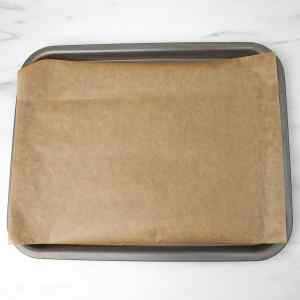
- In a large bowl, whisk together the flour, sugar, lemon zest, baking powder, and salt.250 Grams All-purpose flour, 50 Grams Granulated sugar, 1 Large Lemon, 2 Teaspoons Baking powder, ½ Teaspoon Sea salt
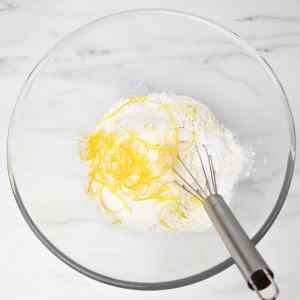
- Grate the cold butter using the large holes of a box grater.113 Grams Unsalted butter
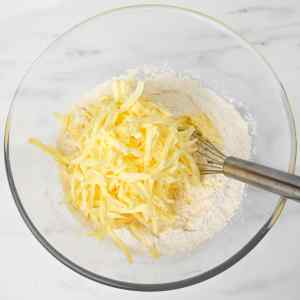
- Add it to the flour mixture and toss to coat. Use your hands to rub the butter into the flour until the mixture looks like coarse crumbs.
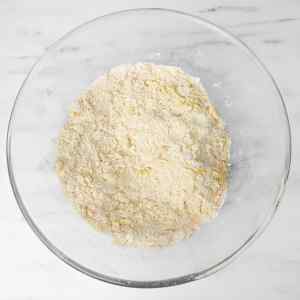
- Gently fold in the blueberries.150 Grams fresh or frozen blueberries
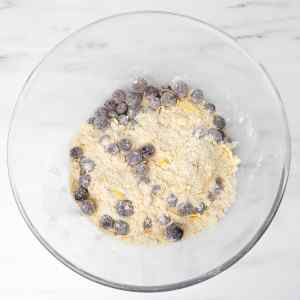
- In a separate bowl, whisk together the buttermilk, egg, and vanilla extract.120 Milliliters cold buttermilk, 1 Large Egg, 1 Teaspoon vanilla extract
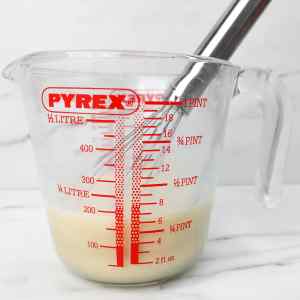
- Pour the wet mixture into the dry ingredients. Stir with a spatula until a rough dough forms. Use your hands to gently knead the dough just until all the dry bits are incorporated. If the dough feels too sticky, add a bit more flour; if it feels too dry, drizzle in a little more buttermilk.
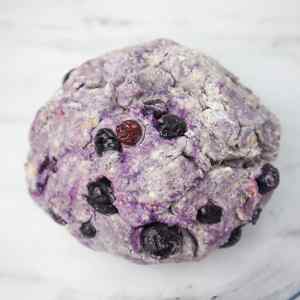
- On a floured surface, shape the dough into a disc about 18–20 cm (7–8 inches) wide and 2.5 cm (1 inch) thick. Cut the disc into 8 equal wedges.
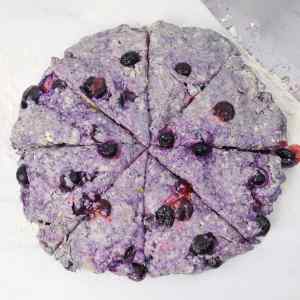
- Place the wedges on the prepared baking sheet with space between each. Freeze for 15 minutes. Meanwhile, preheat the oven to 200°C (400°F).

- Remove the scones from the freezer. Brush the tops with a little buttermilk and sprinkle with coarse sugar if using.Coarse sugar or glaze icing
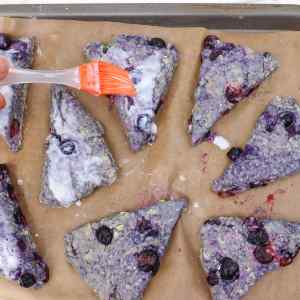
- Bake for 18–27 minutes, or until the tops are golden brown.

- Transfer to a wire rack and let cool slightly before topping or serving.

Make the glaze icing:
- While the scones cool slightly, whisk together icing sugar and 1 tablespoon of water or lemon juice in a small bowl until smooth. Add more liquid, a few drops at a time, until you reach a drizzle consistency.100 Grams Icing sugar, 1-2 Tablespoons Water

- Once the scones are warm (not hot), drizzle the glaze over the tops using a spoon or piping bag. Serve and enjoy!

Notes
Tips and tricks
- Frezzing the dough = flaky scones! Don’t skip this step, it's key to the texture.
- No buttermilk? Mix 120ml whole milk with 1 tbsp lemon juice or vinegar and let sit 5-10 mins.
- Keep it cold. Use chilled ingredients to prevent the butter from melting too soon.
- Avoid overmixing, this can make the scones tough. Work the dough just until it comes together.
- Storage: Best eaten the same day but can be stored in an airtight container for 1–2 days.
- Freezing: Freeze unbaked wedges and bake straight from frozen, just add a couple of minutes to the baking time.
Nutrition
Calories: 323kcalCarbohydrates: 48gProtein: 5gFat: 13gSaturated Fat: 8gPolyunsaturated Fat: 1gMonounsaturated Fat: 3gTrans Fat: 0.5gCholesterol: 55mgSodium: 279mgPotassium: 100mgFiber: 2gSugar: 22gVitamin A: 425IUVitamin C: 9mgCalcium: 93mgIron: 2mg
Tried this recipe?Let us know how it was!